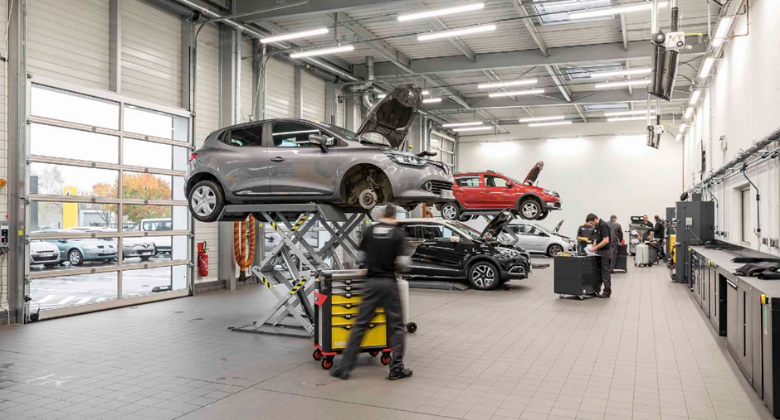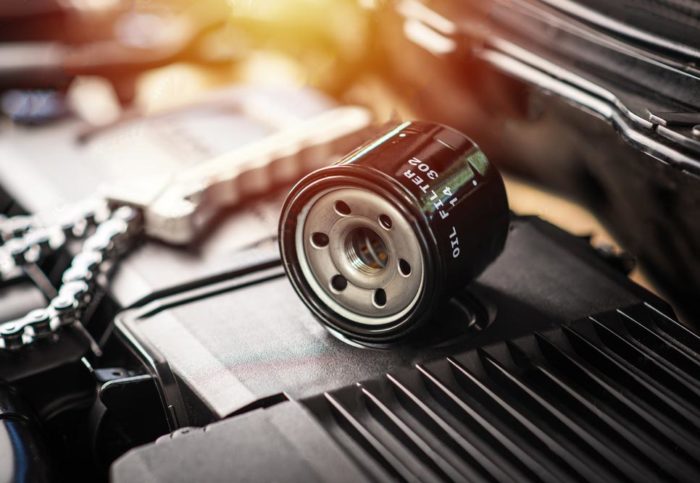Most car owners have asked themselves that question at least once! The brake pads on your vehicle are an essential component. If your car doesn't have a functional braking system, you can't drive it safely; likewise, if you don't have brake pads, your brakes won't work.
How long does it take for brake pads to wear out? What's the lifespan? Do they last a long time?
Find out how long your brake pads last in this article. Here's why brake pads wear out and how you can extend their life. You'll also learn how to maintain your brake pads easily.
What Are Brake Pads?
Brake pads make up your vehicle's braking system between the brake shoe and the brake drum. As your brake pedal is depressed, your brake pads are pushed against the brake disc (brake rotor) and slow your tires down. Your brake discs, calipers, and rotors will soon wear out if your brake pads aren't working. Sadly, every braking pad eventually wears out, requiring periodic replacement to maintain brake efficiency.
Why Do Brake Pads Wear Down?
There's only one answer: friction! Your vehicle slows down due to friction caused by the brake pad and rotor. Eventually, the brake pads will wear away if they continually rub against your rotors. Wear on the rotor is slower than on the brake pads. Your brake pads - not your rotors - are most likely the source of black dust on your wheels.
How Long Do Brake Pads Last?
This question doesn't have a standard answer. Between 20,000 and 70,000 miles are estimated for braking pads by many car manufacturers. About 40,000 miles are the typical mileage for replacing brake pads. Understandably, variations abound! Between 20,000 and 70,000 miles is a lot of mileage. Is there some reason some brake pads last just 20,000 miles while others last 70,000?
Factors That Affect The Lifespan of Your Brake Pads
Many factors can affect brake pad longevity. To extend pad life, consider the following factors.
Driving Habits
On a highway, let's say you're driving 70 mph when suddenly, the car ahead slows down. Your brake pedal will probably be pressed hard on when you hit the brakes.
Brake pads are susceptible to damage in situations like this. In fast driving, braking suddenly requires a lot of stopping power to bring your vehicle to a halt. It is easy for brake wear to increase as a result of this. Your brake pads will need less force to stop your car if you drive slower - and you can expect them to last longer.
The Type Of Brake Pads
How long brake pads last also depends on their type. Different kinds of brake pad materials are used for three brake pad types. The brake pads on your car may be organic, semi-metallic, or ceramic.
Materials such as glass, fiber, carbon, rubber, and kevlar are mixed with resins to make organic brake pads. These brake pads easily cause brake fade due to their low lifespan.
Metallic brake pads (semi-metallic) have a superior braking response to organic pads and are made for performance. It takes about 50,000 miles to wear out a semi-metallic pad.
Luxury cars use ceramic pad car brakes for comfortable braking. About 70,000 miles is the lifespan of carbon ceramic brakes, which aren't meant for high-performance applications.
We have an article on ceramic vs. semi-metallic brake pads that compares the different types of brake pads available.
The Type of Transmission
Do brake pads have anything to do with your car's transmission? You might be able to extend your brake pad life if you have the right transmission. Slowing down with a manual transmission system doesn't just require brake pads. Downshifting gears can slow down without activating brake pads and wearing them out. Engine braking is not recommended for cars with automatic transmissions, as it can damage the transmission.
Your Driving Environment
Although you might not notice it initially, where you live (and drive) can significantly impact your car's brake pad life. Take a moment to consider this.
Hilly terrain forces you to use your brakes more often than flat terrain since you face more climbs and drops. You can damage your brake pads because you must keep starting and frequently stopping in heavy traffic.
The Condition Of The Brake Rotors And Calipers
Other brake components, such as rotors and calipers, help brake pads work effectively. It is very easy for your brake pad to be affected by worn brake rotors and calipers. When your brake pads wear out sooner than expected, it may be due to a stuck brake caliper or a warped rotor.
Why does this happen?
You'll always be driving with a slightly engaged brake pad when you have a stuck brake caliper since the brake pad will not completely disengage from the brake rotor when it's stuck.
How do you know that you have a stuck caliper?
Your wheels may smell burning if your brake caliper has become stuck. If your rotor is warped, your brakes will feel jittery and less effective, leading to braking failure.
How To Know When Your Brake Pads Are Worn Out
With this information, you can determine how long your brake pads will last. What are the signs that a braking pad is about to give out? The following are a few things to watch out for.
Squealing Brake Pads
Have you ever heard your brake pedal squeal or screech? Modern brake pads have that safety feature! Almost all brake pad manufacturers include brake wear indicators. These wear indicators start to squeal when they rub against rotors. Take your brake pads in for an inspection if you hear these squeals often when you brake.
Metallic Grinding
If you hear metallic grinding or screeching instead of a squeal when you brake, consider slowing your car to a halt immediately. When there is a metallic grinding sound, the brake discs are in contact with the brake calipers, and the brake pads are completely worn away. If this happens, your brake system may suffer severe damage, so you should have your automobile inspected right away.
Thin Brake Pads
It doesn't matter if your brake pads squeal or grind to determine whether they need to be replaced. The thickness of your braking pad can be observed and measured at any time.
Brake pads should be at least 6.4mm (14" thick) if you want them to function properly. New brake pads are usually 8-12mm thick. The brakes of your vehicle are at serious risk of failing if they have brake pads thinner than 3.2mm (18.5 inches).
Indicator Lights
Modern vehicles also flash an indicator light when brake pads need to be changed. When you replace brake pads after the indicator lights up, you must also replace the sensor of the indicator.
How To Make Your Brake Pads Last Longer
Everyone wants their brake pads to last as long as possible. To extend the life of your brake pads, what should you do? Use the following methods to prevent too frequent brake pad replacements.
Slower Driving
Slower driving reduces the force your brakes have to exert when you brake. You will wear your brake pads out more slowly with a lower force. Maintain a safe speed limit and always be aware of your surroundings. On the highway, please don't drive less than 20mph!
Reducing The Weight Of Your Car
Ensure there are no unnecessary weights in your cargo carrier, backseat, or trunk. To stop a heavier car, you need more force. You can extend pad life by shedding such unnecessary weight.
Engine Braking
In addition to reducing brake pad wear, engine braking can also reduce brake pad wear. Take your foot off the accelerator pedal and downshift through the gears to slow your car down without relying on your brakes.
The car won't need to brake unless it's an emergency or in first gear (which requires a small amount of braking force anyways). You can technically engine brake in an automatic vehicle, but it's not recommended because it can damage the transmission.
How To Keep Your Brake Pads In Perfect Condition
Brake pads don't stay in perfect condition for long. In most cases, people cannot check their brake pad thickness manually. It's recommended that you have your brake pads replaced by a qualified technician, even if you can inspect them yourself.
The cost of replacing brake pads depends on your car's make and model, but it averages around $100 per axle. Service centers can always fix your car, but make sure your mechanic:
- Has ASE certification
- Uses replacement parts made from high-quality materials
- Provides comprehensive service warranties
Final Words
Brake pad life is affected by several factors. Your driving style, for example, is something you can control. Whenever you replace your brake pads, check them regularly and invest in a good set. In addition, you can easily replace your brake pads using the services of the workshop of your choice, regardless of where you live.
Have you ever wondered how cars work and how they are maintained? Visit KeepDriving to learn more on how to fix a car charger port.







